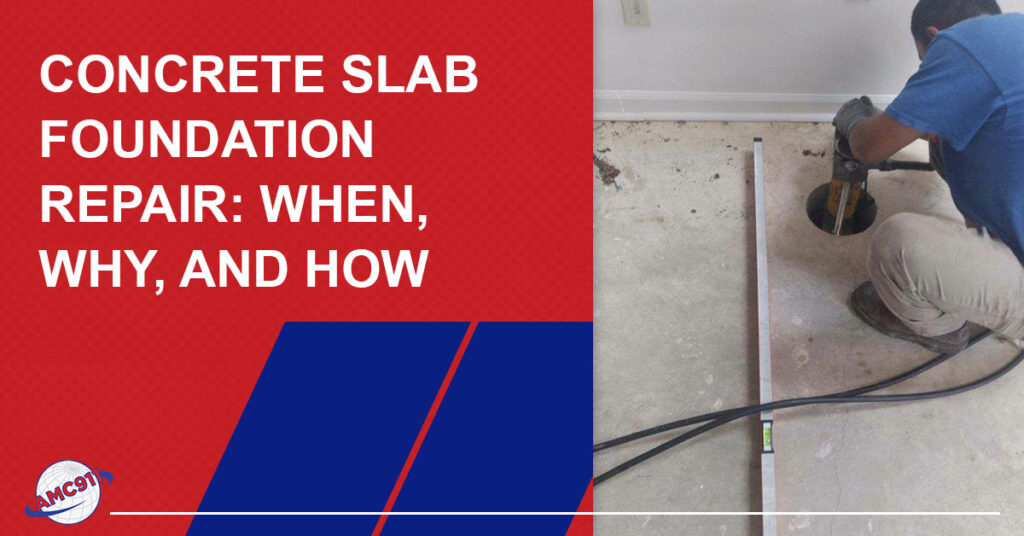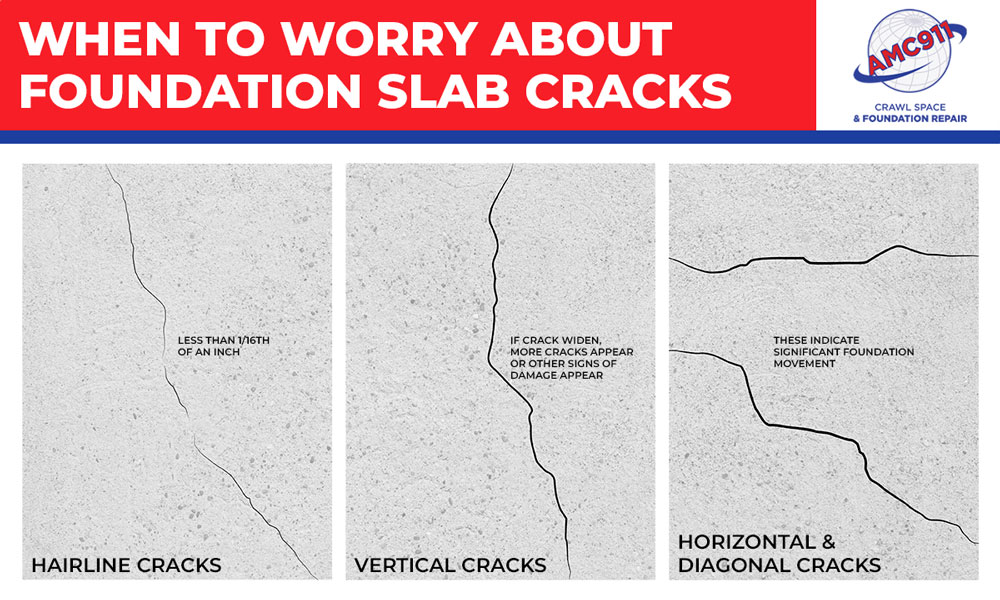Owning a home is a dream come true for many, but it also comes with challenges. One of the most daunting issues homeowners can face is a damaged concrete slab foundation. Repairing this critical part of your home promptly and correctly is essential to maintaining your property’s structural integrity and value. This article will explore everything you need to know about concrete slab foundation repair—from identifying damage to understanding repair methods and costs.
What Is A Concrete Slab Foundation?
A concrete slab foundation, often called a monolithic slab, is a flat, single-layer foundation made of poured concrete. It typically ranges from four to six inches thick in the center and rests on crushed gravel or stone. This type of foundation is commonly used in areas with level terrain, and it provides a stable base for various kinds of structures, including homes.
Concrete slab foundations are popular due to their durability and low cost compared to other foundations. They also offer a quick and straightforward installation process. However, like all foundation types, they can develop issues over time, making it crucial to understand the signs of damage and the necessary repair steps.
Signs Of A Damaged Concrete Slab Foundation
Early detection of foundation problems can save you time and money. Here are some common signs indicating that your concrete slab foundation needs attention:
- Cracks in the Walls and Floors: Visible cracks in your home’s walls or floors can signify foundation movement. While small hairline cracks may not cause immediate concern, larger or widening cracks warrant further investigation.
- Uneven Floors: If you notice that your floors are uneven or sloping, it could indicate foundation settling or shifting.
- Sticking Doors and Windows: Increasing difficulty opening or closing doors and windows can suggest foundation movement. This issue often arises due to the misalignment caused by foundation settling or shifting.
Note: If you see a combination of these signs, promptly contact a foundation repair specialist.
To learn about the top ten signs of foundation damage, read the article “The 10 Most Common Signs of Foundation Problems.”
When To Worry About Cracks In A Concrete Slab Foundation
Not all cracks in a concrete slab foundation should cause alarm, but knowing when to worry can prevent minor issues from becoming major headaches.
- Hairline Cracks: Hairline cracks, those under 1/16 of an inch in your floors or walls, are usually a result of the normal settling process and aren’t typically a concern. Monitor these cracks for any changes over time.
- Vertical Cracks: Vertical wall cracks are often less severe than horizontal or diagonal ones. They often are related to drywall issues rather than foundation problems. However, if they widen, increase in number, or are accompanied by other signs of damage, it’s best to consult a professional.
- Horizontal and Diagonal Cracks: These cracks in your walls can indicate significant foundation movement and should be addressed immediately. Horizontal cracks, in particular, can signal that the foundation is under pressure and may fail.
Note: If you can slip a coin or even a fingernail into a crack, it is time to call a professional for an inspection.
Why Should You Promptly Repair Foundation Damage?
Ignoring foundation damage can lead to severe consequences, both structurally and financially. Here’s why you should act quickly:
- Prevent Further Damage: Foundation issues tend to worsen over time. By addressing problems early, you can prevent more extensive and costly repairs later.
- Maintain Home Value: A well-maintained foundation is crucial for maintaining the value of your home. Foundation problems can significantly decrease your property’s market value and make selling difficult.
- Ensure Safety: A compromised foundation can pose safety risks to you and your family. Structural instability can lead to collapse, endangering lives and causing extensive property damage.
How Do You Repair A Concrete Slab Foundation?
Repairing a concrete slab foundation involves several methods, each suited for different types and severities of damage.
- Foam Slab Jacking: Foam slab jacking, or polyjacking, involves injecting a polyurethane foam beneath the slab to lift it back into place. This method is typically used for minor settling issues.
- Piering: Installing push or helical piers involves driving steel piers into the ground beneath the foundation until they reach stable strata and using hydraulic jacks to lift and stabilize the slab. This method is effective for significant settling and shifting.
- Epoxy Injection: Epoxy injection involves filling cracks with epoxy resin to restore the foundation’s structural integrity. It’s suitable for repairing more minor cracks and preventing water infiltration.
- Water Management: Proper water management is crucial in preventing future foundation damage. Excess water around your home can cause soil expansion or erosion, leading to foundation shifting or settling. By addressing water management proactively, you can maintain the health and stability of your concrete slab foundation. Solutions include installing downspout extensions, a drainage system such as drain tile or a French drain, and waterproof membranes.
What Is The Most Common Foundation Repair?
Piering is the most common foundation repair method because it addresses settling and shifting issues. It provides a long-term solution by stabilizing the foundation and preventing future movement.
How Do You Pick The Best Repair Method?
Choosing the best repair method depends on several factors:
- Extent of Damage: Minor cracks might only require epoxy injection, while significant settling requires piering or slab jacking.
- Professional Advice: Always seek the opinion of a qualified foundation repair specialist who can recommend the most appropriate method based on a thorough inspection.
The article “What Type of Foundation Repair Do I Need?” outlines the best repair solutions for specific foundation damage.
How Much Does Concrete Slab Foundation Repair Cost?
The cost of concrete slab foundation repair varies widely depending on the extent of the damage and the chosen repair method. Before performing a foundation evaluation, we can’t accurately predict how much any foundation repair will cost. For example, while a single crack may cost a few hundred dollars to repair, installing multiple piers can cost upwards of $10,000. However, you can rest assured that our professionals at AMC911 provide customized solutions to your unique requirements.
Can You Repair Your Slab Foundation Yourself?
DIY foundation repair might seem cost-effective, but it comes with significant risks.
- Lack of Expertise: Foundation repair requires specialized knowledge and skills. Without proper training, you might worsen the problem rather than fix it.
- Inadequate Equipment: Professional repair methods often require specialized equipment not readily available to homeowners. Attempting repairs without the right tools can lead to ineffective solutions.
- Warranty Concerns: Most professional repairs come with warranties that offer peace of mind. On the other hand, DIY repairs do not provide the same level of assurance and may void existing warranties on your home.
Addressing concrete slab foundation issues promptly is essential for maintaining your home’s structural integrity and value. From identifying the signs of damage to understanding the best repair methods and costs, being informed allows you to make the best decisions for your property.
If you suspect any foundation problems, don’t delay—schedule a foundation inspection and get a repair quote from our trusted professionals. We service the entire Hampton Roads, Virginia, area.


















